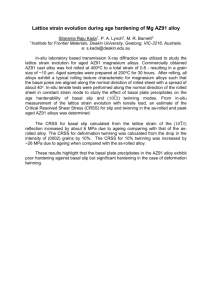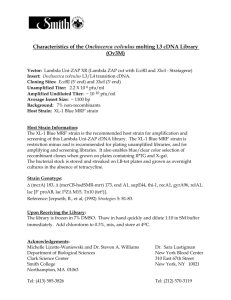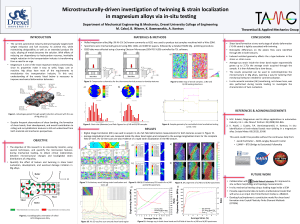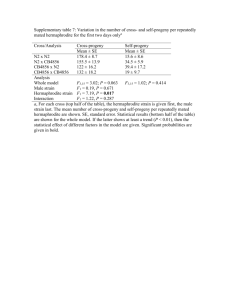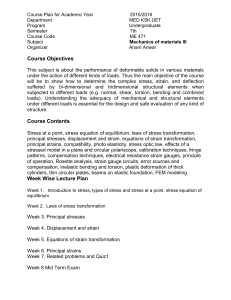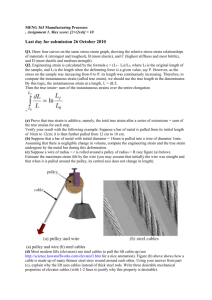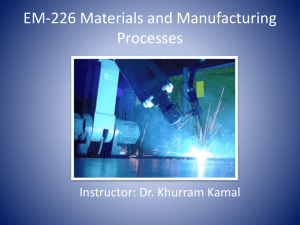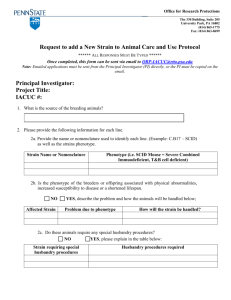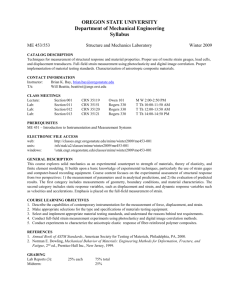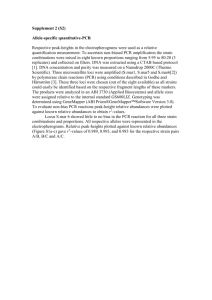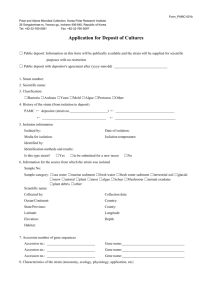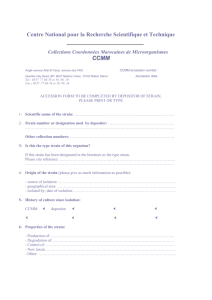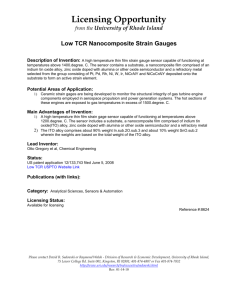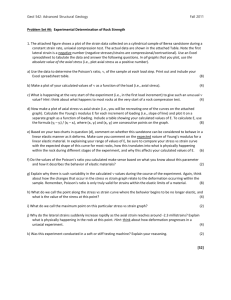Investigation of Fe-Al alloys structure after severe plastic deformation.
advertisement
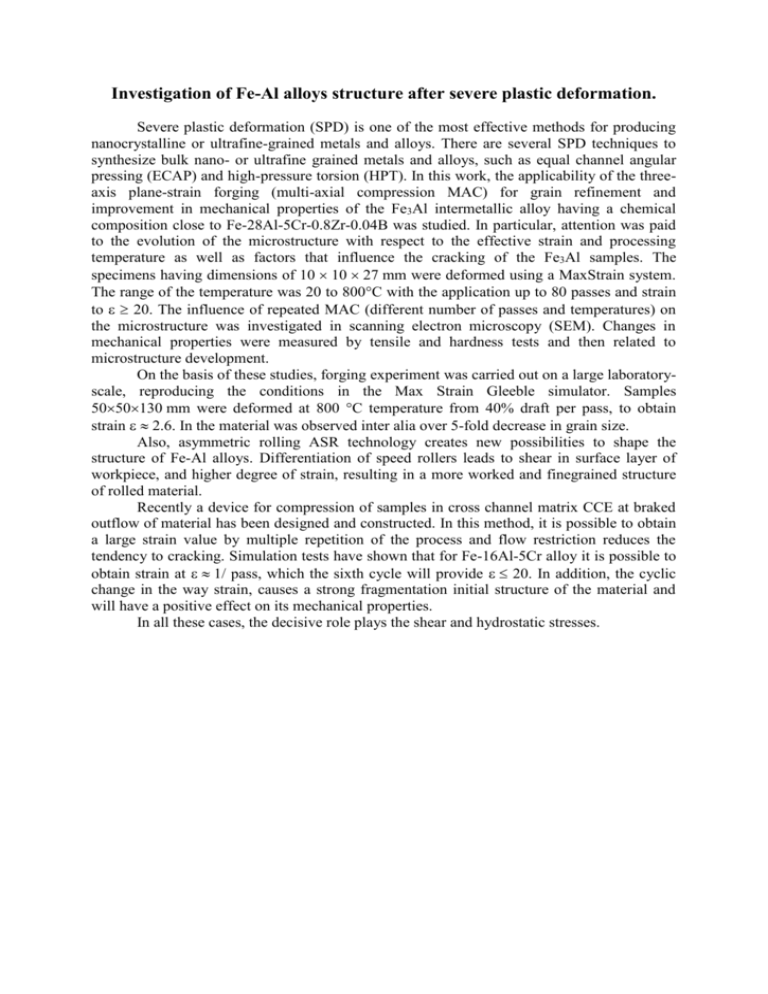
Investigation of Fe-Al alloys structure after severe plastic deformation. Severe plastic deformation (SPD) is one of the most effective methods for producing nanocrystalline or ultrafine-grained metals and alloys. There are several SPD techniques to synthesize bulk nano- or ultrafine grained metals and alloys, such as equal channel angular pressing (ECAP) and high-pressure torsion (HPT). In this work, the applicability of the threeaxis plane-strain forging (multi-axial compression MAC) for grain refinement and improvement in mechanical properties of the Fe3Al intermetallic alloy having a chemical composition close to Fe-28Al-5Cr-0.8Zr-0.04B was studied. In particular, attention was paid to the evolution of the microstructure with respect to the effective strain and processing temperature as well as factors that influence the cracking of the Fe3Al samples. The specimens having dimensions of 10 10 27 mm were deformed using a MaxStrain system. The range of the temperature was 20 to 800C with the application up to 80 passes and strain to 20. The influence of repeated MAC (different number of passes and temperatures) on the microstructure was investigated in scanning electron microscopy (SEM). Changes in mechanical properties were measured by tensile and hardness tests and then related to microstructure development. On the basis of these studies, forging experiment was carried out on a large laboratoryscale, reproducing the conditions in the Max Strain Gleeble simulator. Samples 5050130 mm were deformed at 800 C temperature from 40% draft per pass, to obtain strain 2.6. In the material was observed inter alia over 5-fold decrease in grain size. Also, asymmetric rolling ASR technology creates new possibilities to shape the structure of Fe-Al alloys. Differentiation of speed rollers leads to shear in surface layer of workpiece, and higher degree of strain, resulting in a more worked and finegrained structure of rolled material. Recently a device for compression of samples in cross channel matrix CCE at braked outflow of material has been designed and constructed. In this method, it is possible to obtain a large strain value by multiple repetition of the process and flow restriction reduces the tendency to cracking. Simulation tests have shown that for Fe-16Al-5Cr alloy it is possible to obtain strain at 1/ pass, which the sixth cycle will provide 20. In addition, the cyclic change in the way strain, causes a strong fragmentation initial structure of the material and will have a positive effect on its mechanical properties. In all these cases, the decisive role plays the shear and hydrostatic stresses.



